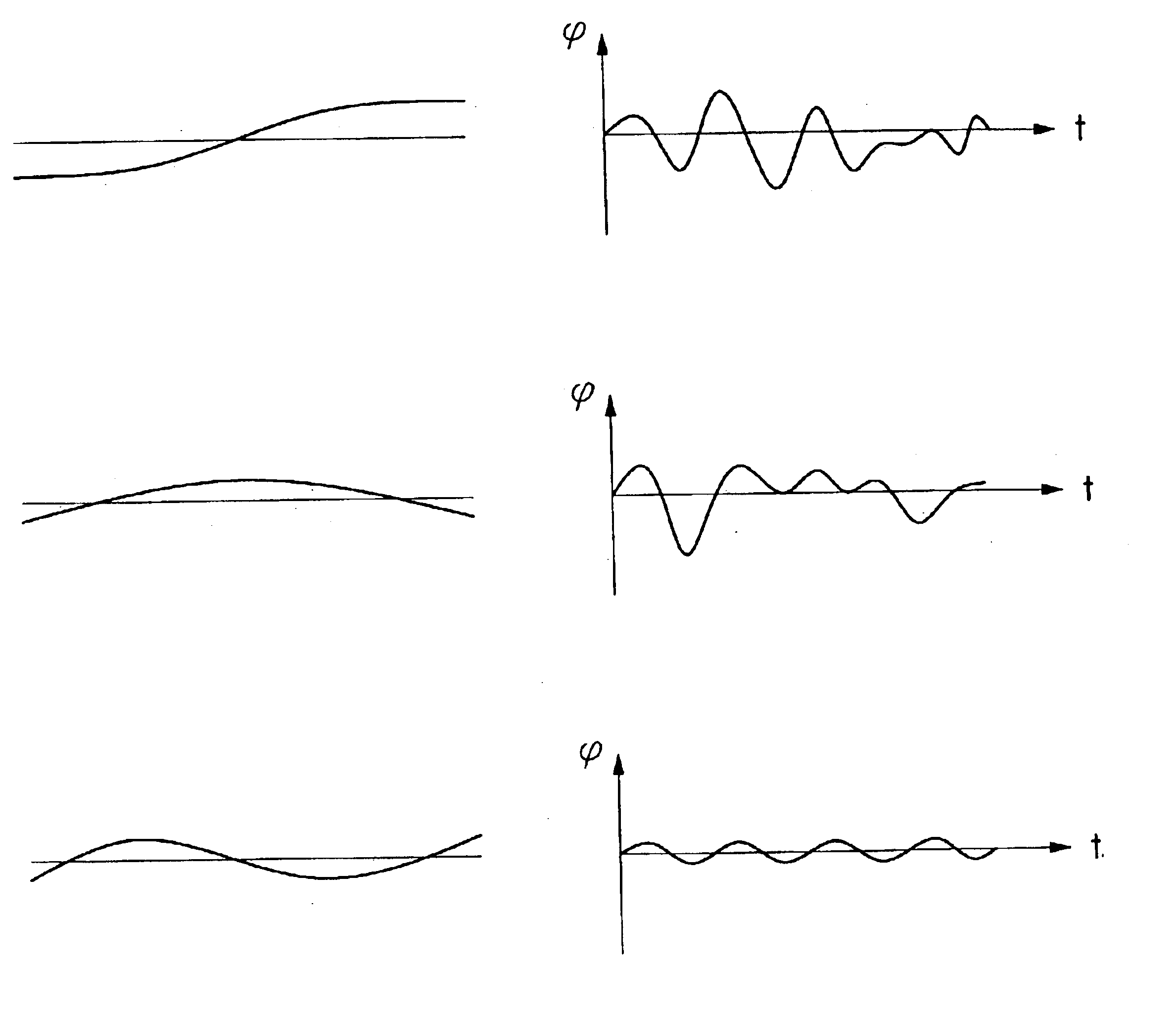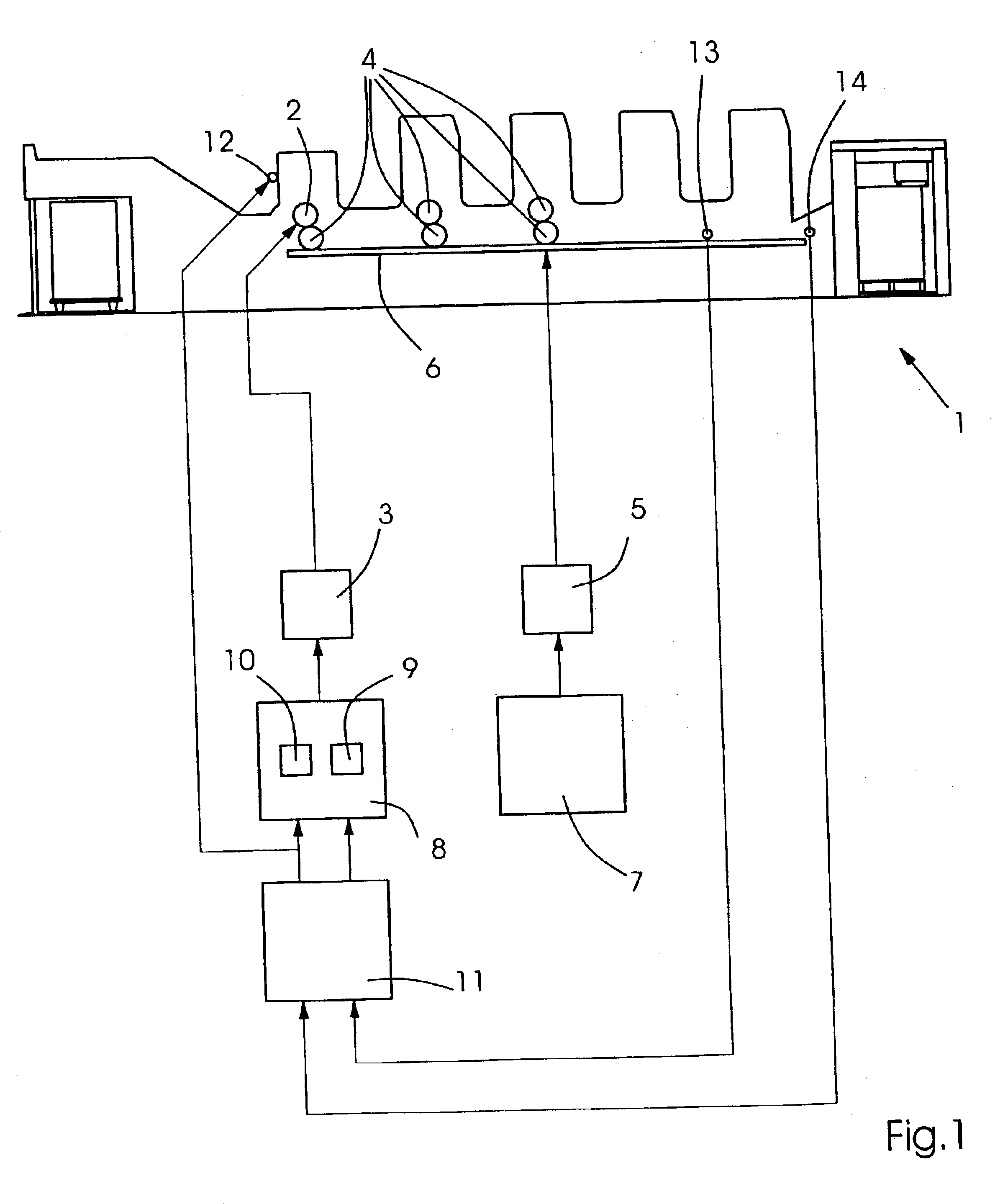Method for controlling a printing press
a printing press and control technology, applied in the field of controlling the printing press, can solve the problems of affecting the quality of printing, the relatively abrupt transition of the vibratory motion between adjacent cylinders of the two subsystems, and the negative influence of vibratory motion on the print quality, so as to achieve convenient adjustment, high precision, and reliable and precise manner
- Summary
- Abstract
- Description
- Claims
- Application Information
AI Technical Summary
Benefits of technology
Problems solved by technology
Method used
Image
Examples
Embodiment Construction
FIG. 1 is a schematic representation of a printing press 1, including components which are relevant in the context of the method according to the present invention. Printing press 1 is composed of two subsystems which each feature a separate drive device. The first subsystem has a cylinder 2 which is driven by a first drive motor 3. Depending on the form of construction, it is also possible for drive motor 3 to drive a plurality of cylinders 2. The second subsystem contains a number of cylinders 4 which are mechanically coupled to each other and driven together by a second drive motor 5. The mechanical coupling of cylinders 4 of the second subsystem is symbolically indicated by a line 6 and can be implemented, for example, by a gear train. The gear train, on one hand, allows all cylinders 4 of the second subsystem to be driven by the same drive motor 5 and, on the other hand, ensures that the rotary motions of cylinders 4 of the second subsystem are performed in sync with each other...
PUM
 Login to View More
Login to View More Abstract
Description
Claims
Application Information
 Login to View More
Login to View More - R&D
- Intellectual Property
- Life Sciences
- Materials
- Tech Scout
- Unparalleled Data Quality
- Higher Quality Content
- 60% Fewer Hallucinations
Browse by: Latest US Patents, China's latest patents, Technical Efficacy Thesaurus, Application Domain, Technology Topic, Popular Technical Reports.
© 2025 PatSnap. All rights reserved.Legal|Privacy policy|Modern Slavery Act Transparency Statement|Sitemap|About US| Contact US: help@patsnap.com



